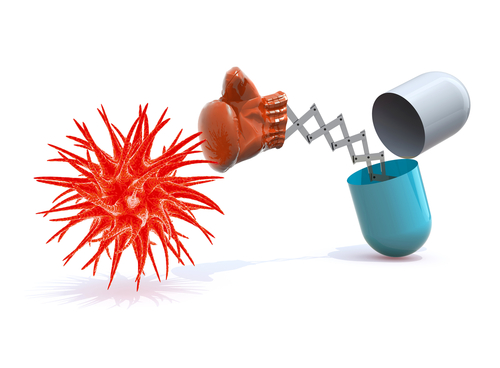A combination of Noxopharm’s radiation sensitizer Veyonda (idronoxil) and 177LuPSMA-617 — a kind of targeted radiation therapy — is safe and well-tolerated, and appears to have a high efficacy in men with metastatic castration-resistant prostate cancer (mCRPC), preliminary results from an ongoing Phase 1/2 trial show.
The findings were presented at the Society of Nuclear Medicine and Molecular Imaging (SNMMI) 2019 Annual Meeting, held recently in Anaheim, Calif. The presentation, titled “Interim Results of a Phase I/II Prospective Dose Escalation Trial Evaluating Safety and Efficacy of Combination 177Lu PSMA 617 and NOX66 in Men with mCRPC Post Androgen Signalling Inhibition and 2 Lines of Taxane Chemotherapy (LuPIN Trial),” highlighted the study’s positive interim clinical data.
Treatment with the targeted radiotherapy LuPSMA alone has proven safe and effective in prostate cancer patients. However, some men do not respond to the treatment, and those who do have limited responses in duration.
Veyonda (formerly known as NOX66) is a kind of immunotherapy that works to increase the number of cancer cells killed by chemotherapy and radiation therapy. It does so by activating the innate immune system — the body’s first line of defense.
To explore whether Veyonda can enhance radiation therapy effects in prostate cancer patients, researchers are conducting the LuPIN Phase 1/2 trial (ACTRN12618001073291). It is testing a combination of Veyonda plus the targeted radiotherapy Lu-PSMA.
The study, being conducted in Australia, is expected to enroll 56 men with progressive mCRPC whose cancer kept progressing despite treatment with the chemotherapies Taxotere (docetaxel) and Jevtana (cabazitaxel), and either Zytiga (abiraterone acetate) or Xtandi (enzalutamide).
To date, 16 participants have been enrolled in the study, all of whom received up to six Lu-PSMA injections, given six weeks apart. Half the patients received additional 400 mg Veyonda, given daily for 10 days, starting on the day prior to Lu-PSMA injection. But after a safety review, the remaining half was given Veyonda at a dose of 800 mg.
Preliminary efficacy data showed that 11 men (70%) experienced a reduction of their PSA levels — a biomarker of prostate cancer — of 50% or more after the combination treatment.
The overall response rate was 69%. Nine men (56%) were able to complete six cycles of treatment over 36 weeks, while four (25%) completed three cycles, and three (19%) completed 4-5 cycles of treatment. Seven patients experienced disease progression before completing the full six cycles.
“These results are particularly encouraging in light of the advanced stage of disease these men are in,” Graham Kelly, PhD, Noxopharm’s executive chairman, said in a press release.
“Being able to use this combination to deliver an anti-cancer effect as evidenced by PSA responses in such a high proportion of patients, and seeing over half of the men being able to complete their full course of treatment, all in a generally well-tolerated way, is a ground-breaking and a personally highly rewarding outcome,” he added.
Overall survival was 100% at three months and 93% at six months. After a median follow-up period of 12 months, 81% of the participants were still alive.
In general, the combo treatment was well-tolerated, with only mild to moderate adverse events being reported. The most common were dry mouth (69%), anemia (63%), fatigue (44%), anal irritation (19%), nausea (7%), and lung inflammation (7%).
“The initial results of this Phase 1 dose escalation study show that the combination targeted treatments were well tolerated together, with no increase in toxicity from 177Lu PSMA 617, and an apparent high efficacy in men who have already had extensive treatments,” Louise Emmett, MD, associate professor at the University of New South Wales in Sydney, Australia, and lead author of the study, said in another news release.
“This raises the very important possibilities of combining tumor-targeted therapeutic agents to gain synergistic treatment effects without an increase in side effects,” she added.
Researchers are now expanding to the Phase 2 portion of the trial to further explore the safety and efficacy of the combo therapy in this at-risk population.

